Convair XP5Y-1/R3Y-1 and –2 Tradewind
Based on 1945 U.S. Navy requirements Consolidated-Vultee (later renamed Convair) designed a fast flying boat that was suitable for various tasks like submarine hunting, mine laying and offensive patrol missions. In fact it was intended as a successor for both the smaller twin-engine Catalina and the four-engine Coronado flying boats. The type designation for the prototype was P5Y; type designation at Consolidated-Vultee was Model 117. The final design was a large aircraft, to be fitted with four new powerful turboprop engines and a carefully designed fuselage. Further it was fitted with relatively narrow-chord wing with two non-retractable wing floats. The shape of the fuselage was more or less inspired on that of the German Blohm & Voss BV 222 ´Wiking´ flying boat that was captured by American forces at the end of the war at Trondheim Fjord in Norway and ferried to Patuxent River Naval Air Station. The final aerodynamic and hydrodynamic properties of the new flying boat were extensively tested in the large wind-tunnel at Langley and on the water with a radio-controlled scale model. After the inspection of the mock-up two prototypes were ordered in 1946 receiving the Bureau of Aeronautics serial numbers 121455 and 121456. Both airframes were completed in December 1948, but the planned experimental Allison XT40 turboprop engines were at that time not yet available. Convair proposed to fit the XPB5Y-1 temporary with Pratt & Whitney R-4360 Wasp Major piston engines but this idea was rejected by the U.S. Navy and the airframes stayed ashore awaiting their final engines……
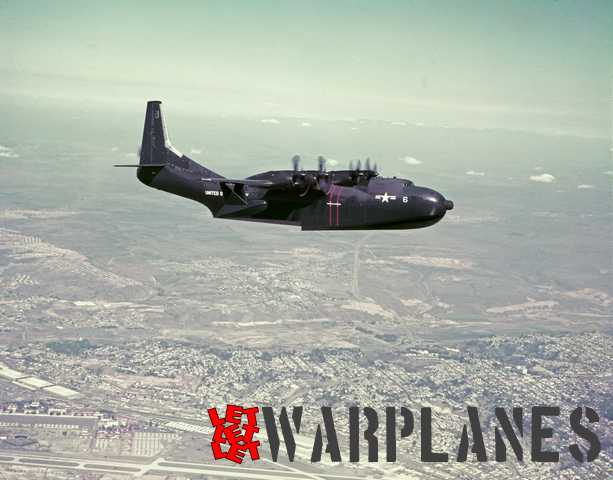
(Mark Nankivil collection)
Patrol bomber test flying:
The first XP5Y-1 made its first flight fitted with four XT40 turboprop engines 1.5 year later; on 18 April 1950.
It took off from the San Diego bay flown by Convair test pilot Don Germeraad and with Sam Shannon as co-pilot. In August 1950 the XP5Y-1 set a world endurance record in its class with a flight of 8 hours and six minutes. However, in the same month the U.S. Navy announced it had no longer any need for an armed patrol flying boat and the gun installations on both sides of the fuselage and the tail were removed. In fact, the planned 20 mm guns were never fitted. The XP5Y-1 was lost on 15 July 1953 on its 42nd flight when the elevator torque tube broke and the aircraft could no longer be kept under control. It crashed into the San Diego bay after the whole crew had left the plane by parachute. The second XP5Y-1 BuNo. 121456 was never fitted with engines and never flew. It was finally scrapped in 1957.
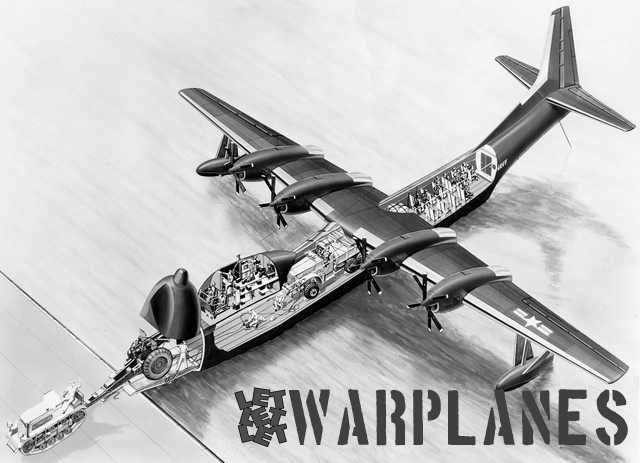
In spite of continuous problems with the T40 turboprops the big new flying boat flew very well and fully met its performances. The T40 was, although very powerful, a technical nightmare. It was a double coupled power plant driving contra-rotating propellers with extension shafts and a reduction gearbox for the contra-rotating propellers. At maximum emergency power it could produce 5100 shaft-hp at a weight of only 1134 kg including the drive shafts. It could give a maximum continuous power of 4000 shaft-hp. However, the drive shaft/gearbox system was far from reliable and the T40 could be used for only 50 hours before overhaul was necessary. Since it was also used in a few other aircraft types, great efforts were made to improve reliability but without substantial success and finally it was only produced in modest numbers for some experimental aircraft types.
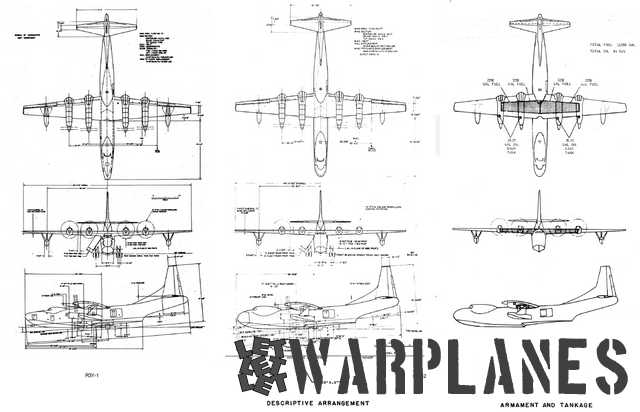
Further as transport plane:
Although the PB5Y-1 was cancelled by the U.S. Navy as a patrol flying boat, this was not the end of the project. Convair received from the U.S. Navy the request to make a further development as a long-range transport plane as the R3Y-1. As name for the new transport plane ‘Tradewind’ was selected. Compared with the earlier PB5Y-1 the Tradewind had reshaped engine nacelles with uprated T40engines, an extra support strut for the wing floats and a modified horizontal tail without the characteristic V-shape of the earlier version. In total the U.S. Navy ordered five R3Y-1’s followed by another six of a further development with a nose section that could swivel upwards for direct loading of the plane. It was known as the R3Y-2 Bowloader. The Bowloader version had an extended flight deck as most remarkable visual characteristic.
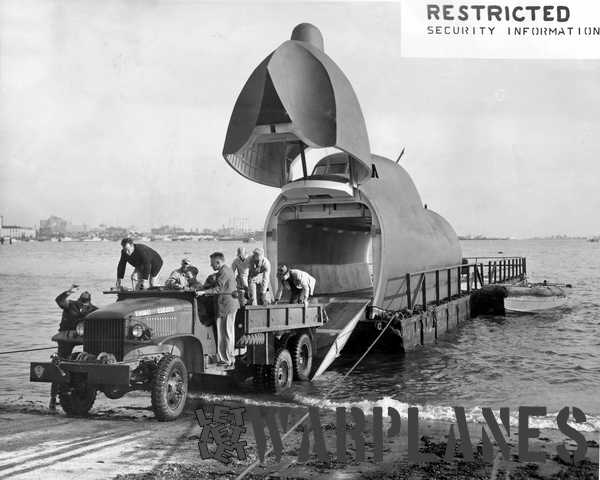
The Tradewinds were used for Transocean transport of freight and people. Except for the large bow door, the Tradewind was also fitted with a large main cargo door on the left side of the fuselage behind the wings. This cargo door opened upwards. For loading a special portable loading platform and hoist installation was made that could not only be used on the ground, but also on small vessels. Further the Tradewind had a special beaching cradle. It had a catamaran layout with an outboard engine on each corner. It was fitted with four double wheels and once it was on the ramp it could be towed ashore by a tractor. At the extreme end of the bow door, a small radar unit was placed. For transport of persons it was fitted with rows of chairs with a 3 + 2 arrangement. Total passenger capacity was 80. The chairs could be easily removed for transport of casualties or freight. For long flights it was fitted with an extensive on-board buffet installation.
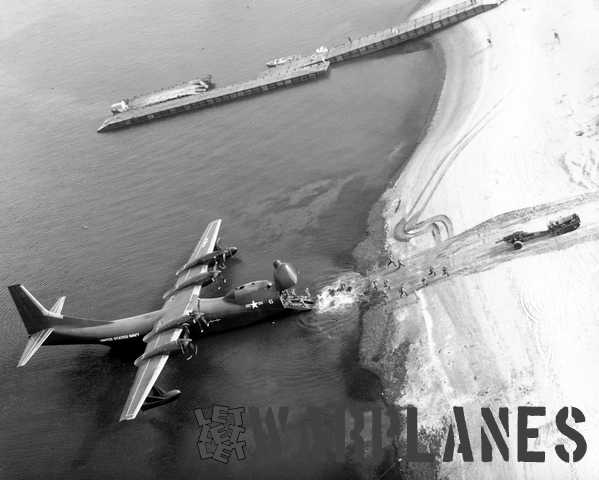
First flight of the R3Y-1 BuNo. 128445 was made on 25 February 1954. Prior to its launch on 17 December 1953 it was christened by movie star Esther Williams with a bottle of water collected from the seven ocean seas as ‘Indian Sea Tradewind’. Six other Tradewinds were also christened with ocean sea names; the remaining four remained unnamed.
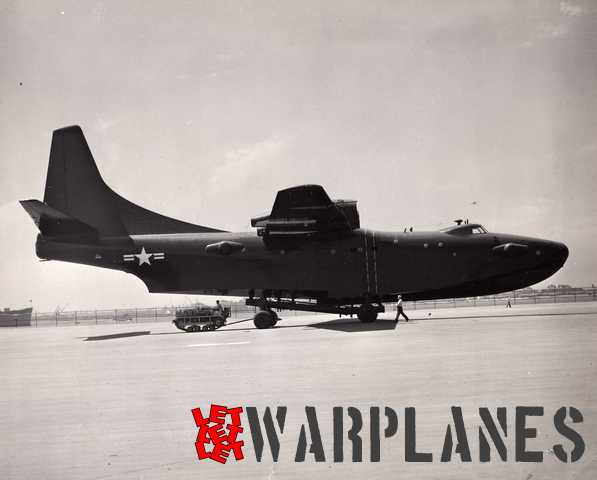
First flight of the first R3Y-2 BuNo. 128450 was made on 22 October 1954. Basically the R3Y-2 was designed as a flying LST (landing ship-tank) to unload guns, trucks, small tanks, armored cars and troops directly on beaches using a retractable landing ramp.
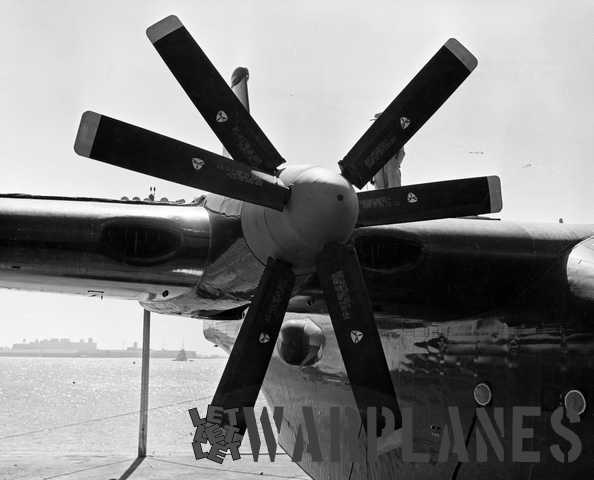
The U.S. Navy and Marine Corps wanted to have in the late fifties large floating sea bases to control the large oceans. These floating bases would operate the six-jet powered Martin Seamaster as a very fast seaplane for bombing and mine laying missions. Operational Convair F2Y SeaDart hydro ski fighters would serve to give the base air cover while the big Tradewind flying boat would provide the logistics from the American mainland. Of course it could also be used for tactical landing missions. In theory it sounded very attractive, but the idea of self-dependent floating airbases was soon abandoned since aircraft carriers were regarded as much more suitable for this purpose!
Operational career:
All eleven Tradewinds entered service in January 1956 at the U.S. Navy Air Transport Squadron VF-2. They were based at Alameda and would replace the Martin Mars flying boats on the regular Alameda-Honolulu route. R3Y-2 Bowloader BuNo. 128450 was used on 27 April 1957 for an amphibian beaching demonstration in the San Diego bay where it not only dropped a load of marines ashore, but also a 105 mm howitzer, a jeep, a light truck and a Mule tractor. The conditions in the bay were quite calm with little or no waves. Even under these conditions the operation proved to be troublesome, although promotional pictures show different. It was found to be difficult to maintain position and going back after unloading with propellers in reverse pitch proved even to be more difficult!
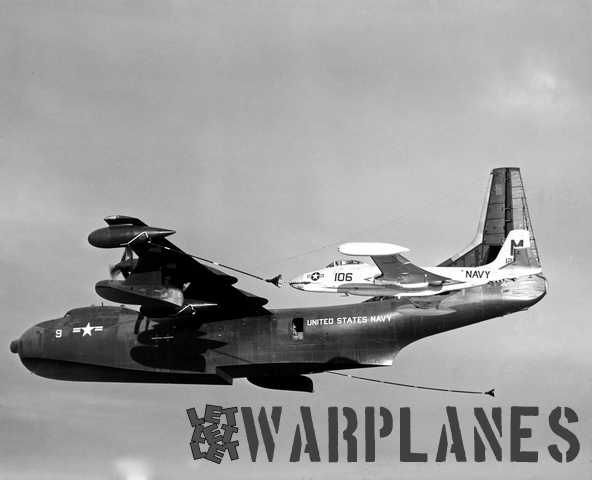
Tradewind BuNo. 131722 was used for flying tanker trials with four fuel tanks under its wings. Fuel could be transferred at a rate of 950 l/hour and the total weight of the in-flight refueling equipment was about 450 kg. The trials of refueling four Grumman Cougar jet fighters and later four McDonnell Banshee fighters were a great success and the Tradewinds were cleared for use as tankers. All equipment could be installed in less than five hours. In spite of these successful trials, the Tradewind was never used operationally as a tanker!
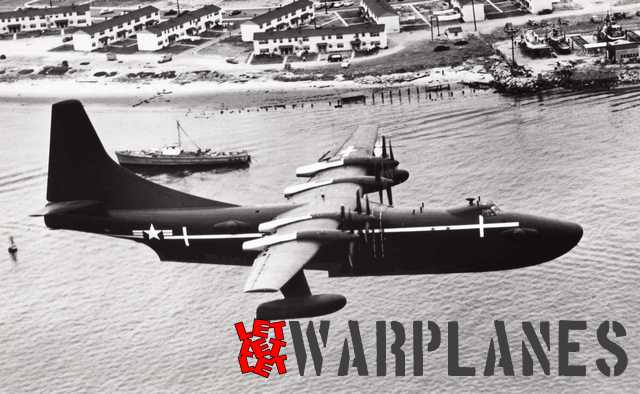
The operational career of the Tradewind as a transport plane at VF-2 was far from successful. Propellers drive shaft and gearbox gave the biggest problems needing much attention and maintenance. On 24 January 1958 fate struck for R3Y-1 no. 128466 ‘Indian Ocean Tradewind’. A broken propeller blade hit the fuselage, making a big hole. After an emergency landing at sea the plane finally stranded on a seawall with one engine still running because it could not be shut down. Sixteen of the crew of seventeen abandoned the plane immediately. The seventeenth crew member, a flight engineer, stayed on board. Through the crawling space in the wings he managed to reach the still running engine and cut off the fuel supply. In spite of this heroic action the plane was a total loss after this incident. On 10 May 1957 a similar accident had happened with no. 128448 ‘Coral Sea Tradewind’. After an emergency landing following an engine failure also this aircraft had to be regarded as a total loss when it sank in shallow water.
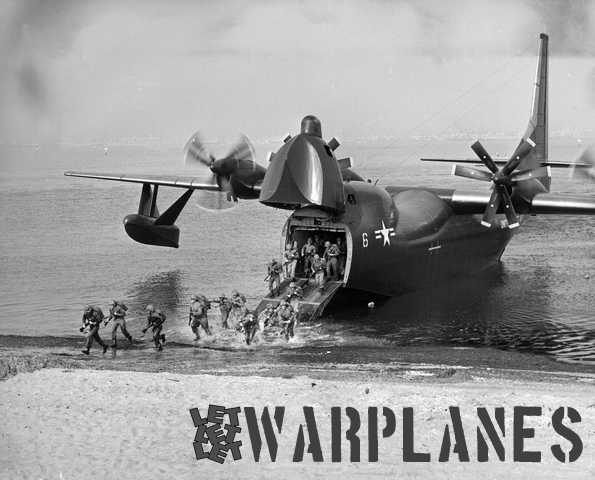
Both incidents meant the end of the operational career of the Tradewind and on 16 April 1958 they were all decommissioned. A year later they were all scrapped. All what remains nowadays is one of the T40 engines that is on display in the San Diego Air & Space museum.
As conclusion we can say the Tradewind never fully meet its expectations for a reliable multi-purpose transport flying boat. Although it gave demonstrations in beach landings and air-to-air refueling it was only used for just a little bit of over two years on a regular transport route with much maintenance problems. With its modest numbers built and its relative low flying hours (all 11 Tradewinds accumulated not more than only 3302 flying hours in total) it must be regarded as a failure. Biggest contribution to this failure was the unreliability of its engines. By the time the Tradewind was operational Allison had with the T56 a much more reliable single-unit turboprop engine available without the complicated transmission shafts but as far as known there never were any plans to replace the T40 with the T56. Although the T56 had a lower power output than the T40, it would have given only slightly lower flight performances, but without the maintenance nightmares of the T40!
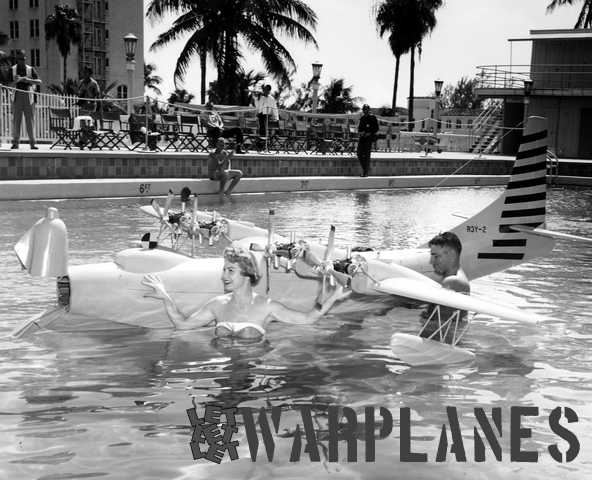
List of constructed XP5Y-1’s and Tradewinds:
Type BuAer No. Name Total flying hours
XP5Y-1 121455 none 102
XP5Y-1 121456 none (never flew)
R3Y-1 128445 none (no.1) 268
R3Y-1 128446 Indian Ocean Tradewind (no.2) 716
R3Y-1 128447 none (no.3) 126
R3Y-1 128448 Coral Sea Tradewind (no.4) 422
R3Y-1 128449 China Sea Tradewind (no.5) 340
R3Y-2 128450 South Atlantic Tradewind (6) 205
R3Y-2 131720 none (no.7) 172
R3Y-2 131721 none (no.8) 40
R3Y-2 131722 Arabian Sea Tradewind (no.9) 421
R3Y-2 131723 Caribbean Sea Tradewind (no.10) 316
R3Y-2 131724 South Pacific Tradewind (no.11) 276
Camouflage and markings:
Both PB5Y-1 and R3Y-1 and -2 were painted in the standard U.S. Navy color non-specular dark sea blue with post-war national insignia. All lettering was in white. BuNos. were placed together with type number in small lettering below the tail. At VF-2 the last three BuNo. digits were sometimes used in larger lettering on the nose.
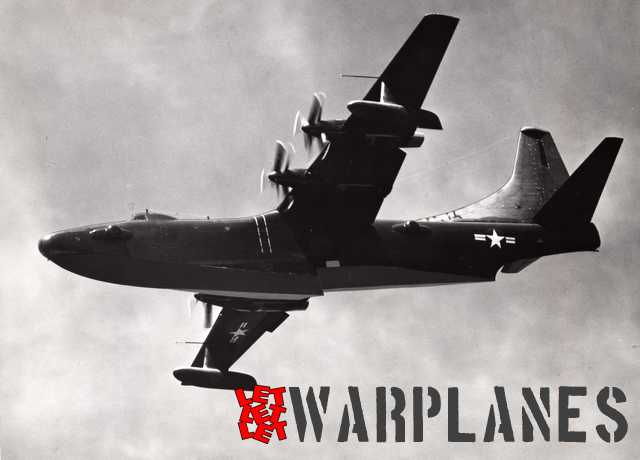
Normally they carried the numbers 1 up to/including 9 on the nose, except when it was replaced by one of the Seven Seas names. The tails of some Tradewinds did not show any markings. Others showed the code ‘LA’ for VF-2 and the BuNo. in smaller lettering.
Tips for the model builders:
Except for some rare 1/72 scale vacform kits produced in the past by O’Neil and Combat Models the Tradewind has been neglected by the big model kit manufacturers. Only Revell has ever released in the fifties at the odd scale 1/164 a kit for the R3Y-2 Bowloader. As usual for that time it was not very accurate without much details and with the usual outlined places where to put the decals. The kit was re-issued as a jubilee model in the mid- nineties but only for the U.S. market. Revell works in Germany never released this kit in Europe!
A-Model has quite recently released a resin/fiberglass kit of the R3Y-1, but the price is an unpleasant surprise: € 260 excluding p&p!
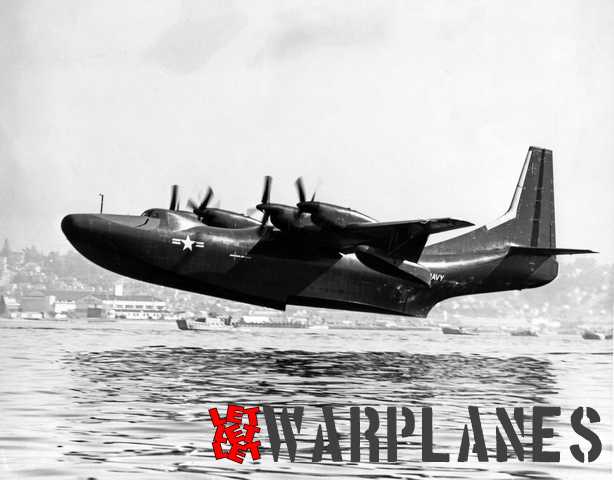
Technical details XP5Y-1:
Power plant: four Allison XT40 turboprop engines of 4000 shaft-hp continuous power output each
Dimensions: wing span 44.50 m
length 38.92 m
Weights: empty 35,579 kg
loaded max. 63,674 kg
Performances: maximum speed 599 km/h at sea level
service ceiling 12,100 m
range 4482 km with standard armament and bomb load
Armament: ten 20 mm canons in four laterally placed gun posts and a single gun in the tail
In total 8 depth charges of 147 kg could be carried.
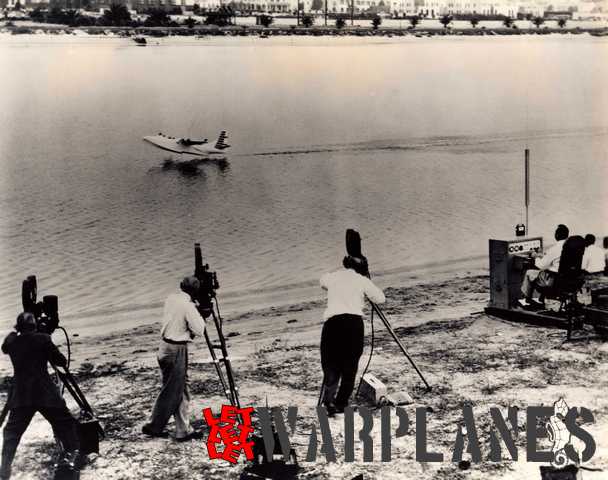
Technical details R3Y-1/2:
Power plant: four Allison T40-A-10 turboprop engines of 5332 shaft-hp continuous power output each
Dimensions: wing span 44.45 m
length 42.50 m
Weights: empty 36,390 kg
loaded max. 79,380 kg
Performances: maximum speed 597 km/h at sea level
service ceiling 12,100 m
range 6437 km
Accommodation: 80 passengers or a total freight load of 21,770 kg
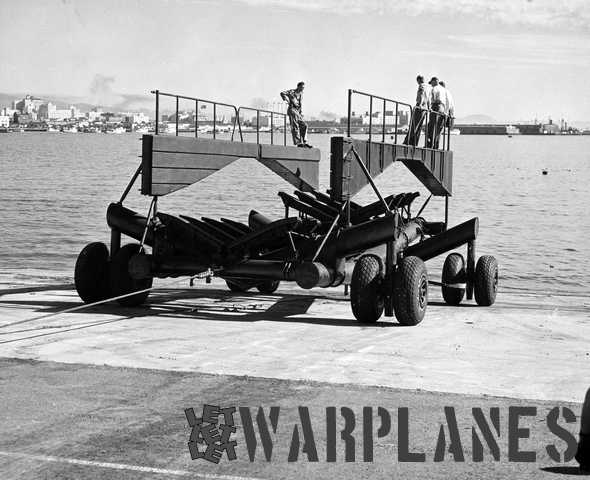
Nico Braas
Literature:
-Steve Ginter, Convair XP5Y-1 & R3Y-1/-2 Tradewind, Naval fighters No. 34 (1996)
-Bill Gunston, Turbo Tradewind, Aeroplane Monthly, Jan. 1992 p.28-49
-Patrick Hoeveler, Vom Winde verweht-Convair Tradewind, Klassiker der Luftfahrt, March 2014 p.28-33






In today’s dollars, research and development of Tradewind would be astronomical and twenty years take to deployed to the fleet if design started all over again. Just look at how much the Navy MQ-25 program has cost taxpayers, >$1 billion dollars!
From the time MQ-47A and model A (two research vehicles each costing $200m) research was fully “matured”, it will have been over twenty years see new un-manned ‘Stingray’ deployed to the fleet. It is now the time review Tradewing project but scaled down, reduced in physical size turned into Robot Seaplane Striking Force (RSSF). Gee wiz, what a national defense project for third decade 21st Century . . . no?
Just think of all the “Helter and Skelter” said RSSF – – deployed – – seabirds would cause to Chines Communist (ChinComm) Navy. Priceless.
America has the designs of the R3Y-1, so lets do a “Back-to-the Future”, get smart and directly take on Red China at sea with RSSF seabirds. What no money? No smarts is more the answer withing Pentagon “E-Ring” of flag-star Navy offices. Those gray haired admirals ready for retirement. Those “men” have “zero ideas” what is possible from past seaplane designs of the . . . COLD WAR.
Americas House of Congress and the new guy (old) now in the White House does not get their act together – – like real soon – – Red China will kick Navy and Air Force asses in a conventional war west of 245 degree longitude, north of 10 degrees latitude and south of 50 degree latitude . . . NOT F–KING GOOD.
Lives of young American naval and air force personal lives on are on the Blood Red Line that down ChinComm naval and air forces has painted on Western Pacific map. What is Congress and the President going to do . . punt? What the hell!
Hello,
I have several original Consolidated folders for the Tradewind types that I have and will be listing on eBay, May not be any information that is new to you but thought that I would let you know.
One is with wind tunnel test photos.
Anyway, just do a search consolidated Vultee R3Y-1 if you get one of the listings, you can go to my store and under the category F CONVAIT ITEMS (near the bottom of listings) and find all listings for sale.
I hope that you find something you could use. My eBay name is planejunk.